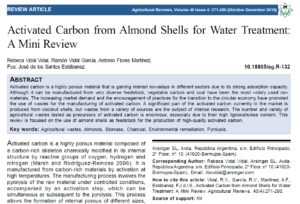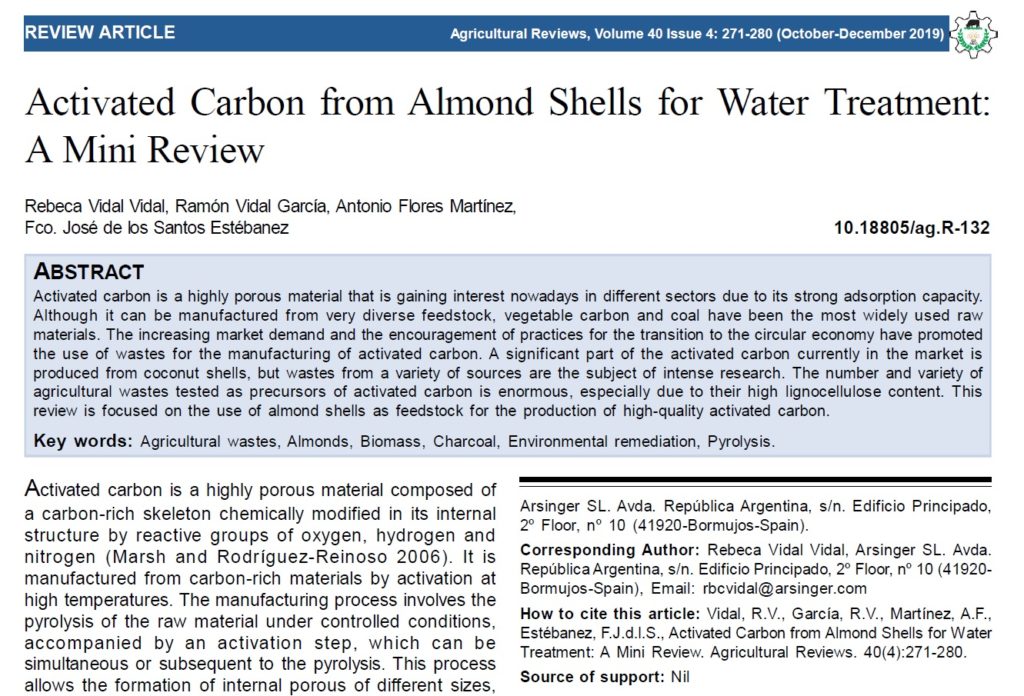
El proyecto “Valorización de residuos agrícolas en biocarbón activo para su uso en tratamiento de agua”, tiene como objetivo fundamental el desarrollo de la tecnología necesaria para la producción de carbón activado a partir de cáscaras de almendra y/o cascarilla de arroz producidas en Andalucía para su posterior uso en tratamientos de aguas. Para la consecución de este objetivo, una de las actividades fundamentales es la puesta a punto a escala de laboratorio de las condiciones óptimas de producción.
Desde ARSINGER, se ha llevado a cabo un análisis del estado del arte sobre fabricación de carbón activado a partir de CÁSCARAS DE ALMENDRA, utilizando la bibliografía científica especializada, con objeto de conocer los avances científicos en esta área.
Los resultados obtenidos se muestran en el documento completo disponible desde este enlace o archivo
Fabricacion carbon activo cascaras de almendra_Estado del arte



